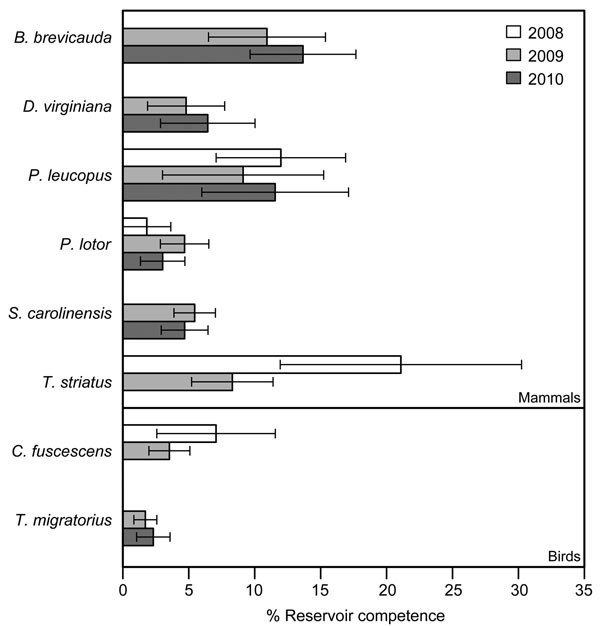Volume 18, Number 12—December 2012
Dispatch
Reservoir Competence of Vertebrate Hosts for Anaplasma phagocytophilum
Figure 2

Figure 2. . . Mean reservoir competence of 14 host species (10 mammals and 4 birds) for Anaplasma phagocytophilum, southeastern New York, USA, 2008–2010. Error bars indicate SE. Reservoir competence is defined as the mean percentage of ticks infected by any individual host of a given species. For inclusion, sample sizes for a species had to be >4 in >2 years. No species showed significant variation in reservoir competence across years (p>0.10, by 2-way analysis of variance or Kruskal-Wallis test as appropriate, for all species tested). Single-letter abbreviations for genera along the left indicate Blarina, Didelphis, Peromyscus, Procyon, Sciurus, Tamias, Catharus, and Turdus, respectively.
Page created: November 21, 2012
Page updated: November 21, 2012
Page reviewed: November 21, 2012
The conclusions, findings, and opinions expressed by authors contributing to this journal do not necessarily reflect the official position of the U.S. Department of Health and Human Services, the Public Health Service, the Centers for Disease Control and Prevention, or the authors' affiliated institutions. Use of trade names is for identification only and does not imply endorsement by any of the groups named above.